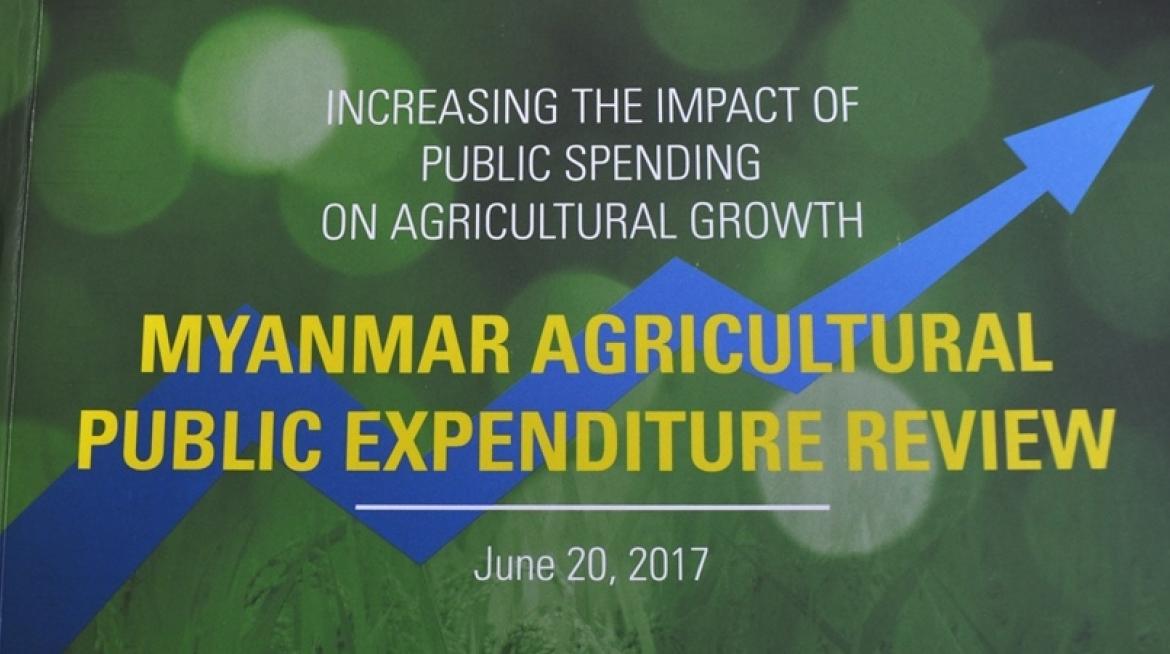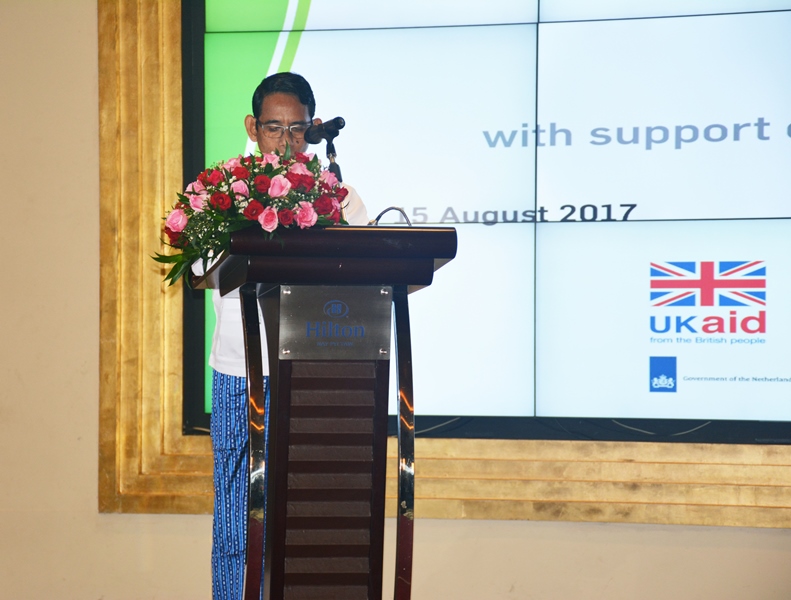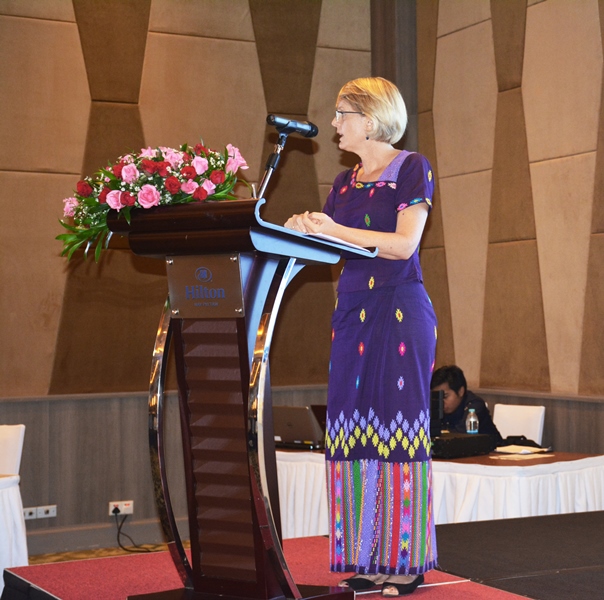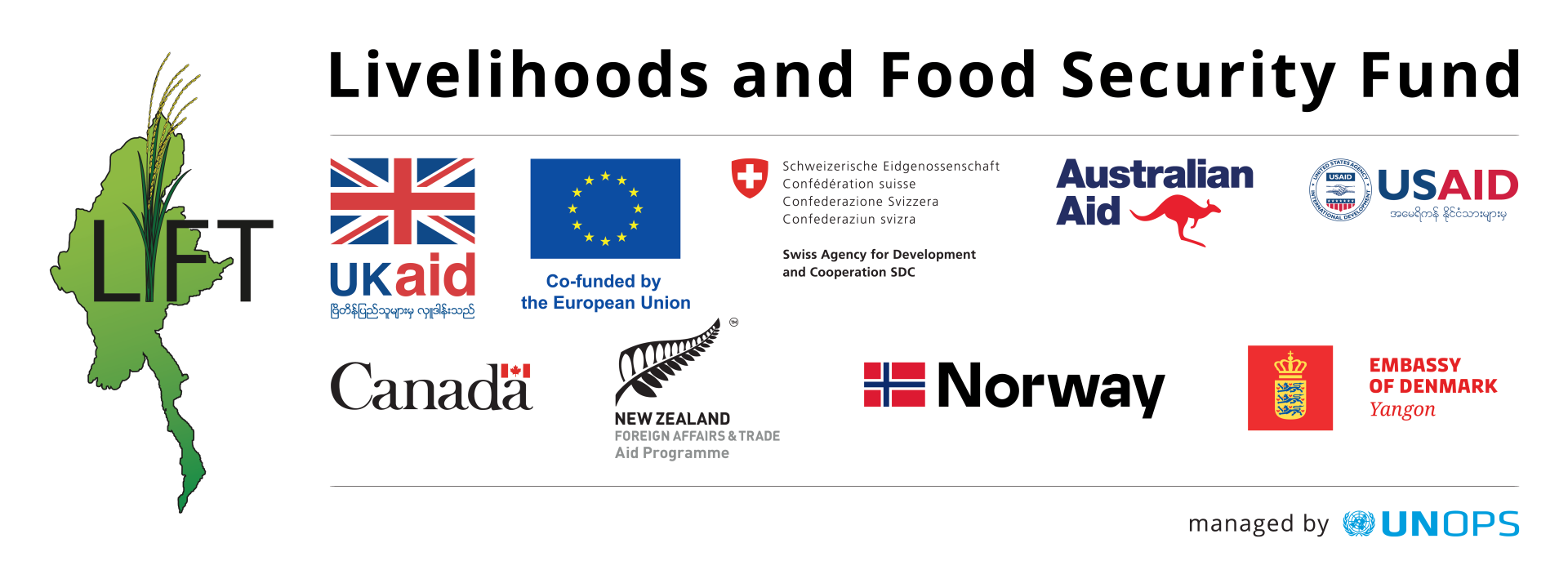
LIFT and the World Bank launched the Myanmar Agricultural Public Expenditure Review report in Nay Pyi Taw on 15 August with the Ministry of Agriculture, Livestock and Irrigation. The report examines public spending in agriculture over the past decade. It was produced by the World Bank with funding and technical support from LIFT, and assistance from the Union Ministry of Agriculture, Livestock and Irrigation (MOALI).
Myanmar’s economy relies heavily on the agricultural sector. In 2015/16, agriculture accounted for 29 per cent of the total gross domestic product, and 50 per cent of the labour force. Beans and pulses were the largest agricultural export item, bringing in USD 1,152 million, with rice, livestock, fisheries and other agriculture export items each generating USD 400-500 million each.
Despite increased government spending in recent years agricultural growth is low. The World Bank researched public spending and agricultural practices from 2009/10 to 2016/17, identifying some of the challenges in agriculture as well as options for future action.
Launch Event in Nay Pyi Taw
The event was opened by Union Minister HE Dr Aung Thu, Ministry of Agriculture, Livestock and Irrigation who said agriculture was a top priority of the government’s because of its importance for food security, rural development, and poverty reduction.
He said agriculture growth had been lower than expected due to factors like climate change, volatile prices, import protection from the neighbours, lack of information and good inputs, poor access to finance, and many other factors.
“Our government overall and my Ministry in particular are working hard to help farmers to overcome these constraints. We allocate a lot of public funds to various programs to support agricultural development. In 2017/18, for example, the Union level budget for agriculture and rural development will be 1.2 per cent of GDP and about 6 per cent of total Union expenditures,” he said.
He said the Agricultural Public Expenditure Review was timely and important as it presented options for increasing the impact of public spending on agricultural growth, directly complementing and supporting the implementation of the Agricultural Development Strategy and Investment Plan.

Union Minister HE Dr Aung Thu, Ministry of Agriculture, Livestock and Irrigation. Photo credit: LIFT.
The report’s principal author, Sergiy Zorya , Senior Agricultural Economist, World Bank, introduced the report. He outlined key findings and recommendations of the report. These include rebalancing the agricultural budget’s composition, improving the quality of the programmes’ implementation, and improving the agricultural policy and business regulatory environment.
LIFT Fund Director Katy Webley also gave remarks at the launch.
“The report provides insights as to why Myanmar’s past public spending has had limited impact on agricultural growth,” Ms Webley said.
“Produced with the support and contribution of the Ministry of Agriculture, Livestock and Irrigation, the report is a notable example of collaboration, and commitment to the use of data for learning and action.”

LIFT Fund Director Katy Webley speaking at the launch. Photo credit: LIFT.
Parliamentary Committee Meetings
In the evening, key stakeholders met with Parliamentary Committees from the Upper and Lower Houses to discuss the report and its application.
Key Findings
During the decade 2009/10-2016/17, Ministry allocated spending almost tripled from USD $267 million to $775 million. Part of this increase can be attributed to donor contributions, which increased exponentially from $7 million in 2012, to $108 million in the 2016/17 period.
Despite this dramatic increase in funds, Myanmar averaged only 2.5 percent annual agriculture sector growth over the 10-year period. This is less than other nations in a similar stage of development. In the period 1980-1985, Thailand averaged 4.1 percent annual growth, and between 1993-2000 China averaged 3.6 percent.
The report supported many reforms outlined in the MOALI Agricultural Development Strategy and Investment Plan. These include implementing a shift from current rice-centric policy to a more multidimensional food policy, restructuring the budget to increase spending to critically under-funded areas, increasing donor funding and improving the quality of programmes’ implementation through capacity building.
Download the report here to read more.


